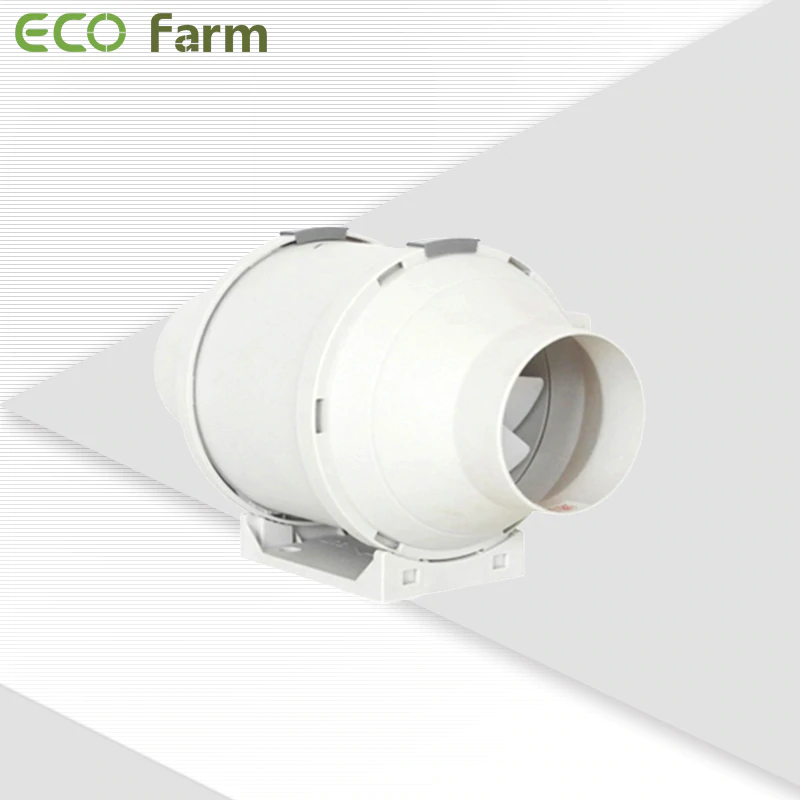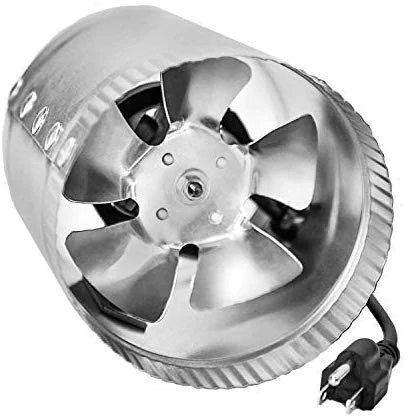- Home
-
SHOP ECO FARM
- ECO Farm Grow Lights
- ECO Farm LED Grow Lights
- ECO Farm Quantum Board
- ECO Farm Samsung LED Grow Lights
- ECO Farm COB Grow Lights
- ECO Farm Commercial Lights
- ECO Farm Supplemental Grow Light
- ECO Farm Fluorescent grow lights
- ECO Farm HPS & MH Grow Lights
- ECO Farm CMH Grow Lights
- ECO Farm HID/CMH Bulbs & Ballasts
- ECO Farm Grow Tents & Kits
- ECO Farm 2x2ft Grow Kits
- ECO Farm 3x3ft Grow Kits
- ECO Farm 3.3x3.3ft Grow Kits
- ECO Farm 4x4ft Grow Kits
- ECO Farm 5x5ft Grow Kits
- ECO Farm Grow Tent - Standard Style
- ECO Farm Grow Tent - Extension & Roof & Lodge Style
- ECO Farm Extraction & Harvest
- ECO Farm Rosin Press Machine
- ECO Farm Dry & Wet Trimmers
- ECO Farm Oil Accessories
- ECO Farm Medicinal Plants Grinder
- ECO Farm Medicinal Plants Containers
- ECO Farm Medicinal Plants Dryer
- ECO Farm Refrigeration Dryer
- ECO Farm Climate Control & Other Accessories
- ECO Farm Inline Duct Fans
- ECO Farm Oscillating Fans
- ECO Farm Exhaust Fans
- ECO Farm Air Filter
- ECO Farm Duct Muffler
- ECO Farm Ventilation Kits
- ECO Farm Plant Humidifiers
- ECO Farm Plant Dehumidifiers
- ECO Farm Hydroponic Accessories
- ECO Farm Other Accessories
- ECO Farm Hydroponics Microscopes
-
TOP BRANDS
- Grow Lights Brands
- Adjust-A-Wing
- Apollo Horticulture
- Bestva
- Black Dog LED
- California Lightworks
- ChilLED Grow Light
- Eco Farm
- HLG - Horticulture Lighting Group
- Kingled
- Kind LED
- Mars Hydro
- Morsen
- Neilo
- NextLight
- Phlizon
- PlatinumLed
- Roleadro
- Optic LED Grow Lights
- ViparSpectra
- Vivosun
- EYE Hortilux
- IPOWER
- NanoLux
- Phantom grow light
- Gavita grow lights
- Grower's Choice
- Lumatek
- Maxibright
- Yearld Pro
- ThinkGrow
- Crecer Lighting
- Green Sunshine Electric Sky
- fohse aries
- loriflux
- luxx
- fluence
- iluminar
- Lex
- LTC
- Rayonled
- FGI
- PHOTONTEK
- Grow Tents & Kits Brands
- Apollo Horticulture
- Black Box
- CoolGrows
- Eco Farm
- GrowLab
- Gorilla Grow Tents
- Mars Hydro
- Quictent
- Secret Jardin
- Unit Farm
- TopoGrow
- VIVOSUN
- Topolite
-
COMPANY INFO
-
COOPERATE WITH US
- Blog
ECO Farm 6 Inch In-line Fan Exhaust and Intake Fan for Grow Room-White VS iPower Booster Fan Inline Duct Vent Blower
March 09, 2022
When growing your plants indoors hydroponically, you must take special care to mimic the plant’s natural habitat. Bringing in tools such as dehumidifiers, humidifiers, and inline fans helps create realistic environments with ideal grow room temp and humidity levels. Today, we will share the best inline fans for your grow tent. Whether growing large plants or small, they all need a lot of TLC, and inline fans help with that to make sure your plants get fresh air indoors!
The best grow tents all have one thing in common- a great inline fan. The benefits of inline fans for your grow tent are endless, and perhaps inline fans can be deemed essential to successful indoor growing, whether hydroponics or otherwise. Inline fans cool grow areas that may receive a buildup of humidity. How do you lower the humidity in your grow tent? Ventilation and air filtration are necessary for healthy and robust plants. All important reasons to consider one for your grow tent!
How to calculate the size of the inline fan you need?
How big an inline fan you’ll need for your grow space depends on how much air you need to move for your plants to be healthy. In general, if you have a 3x3x6 feet grow tent or smaller, you can get by with a 4-inch carbon filter and inline fan. If you have anything larger than that, up to 5x5x6 feet, a standard 6-inch carbon filter and inline fan should do the job. Anything larger than that, you’ll have to calculate it out yourself.
To calculate this, you’ll need to know how much air you need to move per minute, considering the size of your grow space. It is calculated in the inline fans through its CFM rating or cubic feet per minute rating. For example, let’s say you have a 3x3x6 feet grow tent setup. It means that you’ll need to move 3x3x5, which is 54 cubic feet of air per minute. So you’ll need a 54 CFM inline fan if you’re not planning on using any ducting or a carbon filter.
But if you want to use ducting and a carbon filter, it gets a little dicey. Adding ducting and carbon filters makes the inline fan less efficient by making it harder to push and pull the air through. You’ll then need to multiply the total CFM by two if the air doesn’t have to go through too many hoops. Multiply it by three if there’s a lot of ducting involved.
A carbon filter will also have a CFM rating. It tells how much air the carbon filter can push or pull per minute. All you need to do is to make sure that this number is similar or higher to your inline fan’s CFM rating; otherwise, it will bring the inline fan down.
ECO Farm 6 Inch In-line Fan Exhaust and Intake Fan for Grow Room-White

Features:
This ECO Farm inline duct fan features a powerful blower with a fan speed of 2550 RPM and an airflow of 390 CFM. Move air efficiently through your target location for optimal ventilation. The in-line ducted fan has a one-year warranty, high working efficiency, shock resistance and stability, and low energy consumption to achieve a perfect sense of use and optimal airflow. Greenhouse ventilation fans are very suitable for controlling the growth of tents, hydroponic plants, high temperature and high humidity indoor garages and other confined spaces, air circulation, odor removal, and keeping indoor air fresh. The 6 inch duct fan has a removable and fixed locking steel buckle for quick removal and easy maintenance. Fans can be installed in a straight line or at any angle in the ductwork. The installation box can be rotated and installed at will, which is convenient for installation and connection.
iPower Booster Fan Inline Duct Vent Blower

Features:
Portable and lightweight, this iPower in-line duct fan can be installed anywhere because it features an extra-long 5.5' grounded power cord inside. The maximum ambient temperature is 60°C / 140°F. The advantages of fans are that they can deliver large amounts of air quickly and efficiently; temperature control — cooling chambers that tend to accumulate excess heat. If any other substances/particles get into the ducted fan and jam the blades, the user should immediately turn off the power, clean it up, and turn the power back on after proper disposal.
How to Choose the Best Inline Fan
As you search for the best grow room fan, these are some of the most important things that you have to take into consideration:
Material: This is an important consideration as this will be indicative of the performance and quality of the inline fan that you will choose. Steel is one of the most common. In most instances, steel is also powder-coated, providing it with the ability to resist external elements that could lead to physical damage.
Size: The diameter of the inline fan determines its size. The larger the grow room is, the larger is the fan that you will need. This is because it will be more powerful, making sure that the entire area of the tent will be properly covered. If the grow room is small, a 4-inch inline fan will be sufficient. If it is large, a 10-inch fan will be a good pick.
Noise: As it generates air, noise can be an issue. If you live in a small house, the noise can be loud and annoying. With this, settle for a model that generates as little noise a possible. The fan must provide whisper-quiet operation. Innovative features have been introduced in the past to make fans powerful without making a noise at all!
Speed: Do you want the inline fan to run slow or fast? It will be good if you will have the freedom to adjust the speed as desired. With this, so that you will be able to customize it, you need to find one that comes with a speed controller.
Power: The power of the fan refers to how much air it can generate. This is expressed as CFM or cubic feet per minute. The higher the CFM, the more powerful the fan is, and hence, it will be suitable even if you have a large grow tent.
Motor: As you determine the power of the inline fan, you also have to look at the motor, which will have an impact on its overall performance. A high-quality motor needs to be powerful without making a lot of noise and while maintaining energy efficiency. It will also be good if the motor is maintenance-free.
Ease of Installation: There is no need for professional help when installing an inline fan. Choose a product that comes with a user-friendly design so that installing and operating the unit will be a snap on your end. A mounting bracket should already be included. It should also come with detailed instructions from the manufacturer.
Warranty: What happens if the inline fan becomes defective? If it is still within the warranty period, you can return it to the manufacturer. They can have it replaced or repaired, depending on the terms and conditions. At the very list, choose a product with a warranty coverage that lasts for a year.
Conclusion
After going through all the fans’ features, we found ECO Farm 6 inch Inline Duct Fan to be the quietest. Producing a minimal amount of noise gives you maximum output at every speed. It is budget-friendly and quieter than the rest of the fans. Its high-quality engineered design is quite sturdy and durable. What more can you expect? The ECO Farm inline fan fulfills every aspect of your requirement.
All the other products also operate quietly. From maintaining an optimum temperature in your plantation to operating at variable speeds, the above-mentioned fans never fail to surprise us. Choose wisely, as inline fans are an essential requirement for your indoor grow tent.
Leave a comment
Also in News

What are the best LED grow lights to use in a grow tent?
June 27, 2024
When choosing Best LED Grow Lights, you should also consider the durability of the lamp, energy efficiency and whether it can meet the light needs of specific plants. For example, the LED plant growth lights provided by Philips Lighting are designed for specific crops to promote uniform growth and improve quality and yield.

Can I use normal led lights to grow plants indoors?
June 20, 2024

What's the best indoor LED growing light on Amazon USA?
June 15, 2024
On Amazon, hot growth light types include LED Growing Lights, which have a variety of functions and features such as automatic on/off timing, red and blue LED light combinations, multiple dimmable modes, and flexibility for indoor potted plants or indoor gardens.
